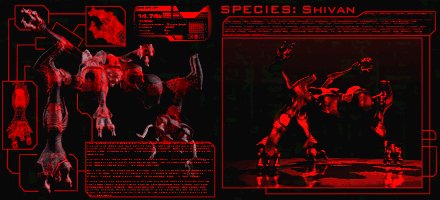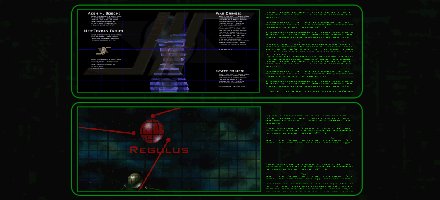
|
Galactic Terran Vasudan Alliance The Galactic Terran-Vasudan Alliance (GTVA) was formed in 2345, ten years after the Great War. This treaty organization recognized the autonomy of its constituents as it provided a framework for trade and mutual defense. The Great War had transformed the enmity between Terrans and Vasudans into a lasting fellowship. As the industry and economy of the Terran-Vasudan systems recovered, support for a more powerful GTVA gained momentum. In 2358, delegates signed into existence the Beta Aquilae Convention (BETAC), named after the system where the constitution was drafted and ratified. BETAC dismantled the governments of the Terran blocs and recognized the General Assembly, the Security Council, and the Vasudan Imperium as the supreme authorities of Terran-Vasudan space. Under BETAC, the Vasudans and the Terrans maintain separate fleets under a single command structure. A warship is designated GT or GV, indicating whether it is Galactic Terran or Galactic Vasudan. The two species openly exchange information and technology, and the most recent fighters and bombers can be modified to accommodate pilots of either species. Technically, BETAC is but one of a series of conventions and treaties that define how the GTVA functions as a political, military, and economic entity. However, the significance of BETAC as the cornerstone of the Terran-Vasudan alliance has made it the favored target of NTF propagandists. |

|
The Vasudans The Vasudans are a civilization of philosophers, artists, and scholars. They immerse themselves in the teachings of those who came before them, perceiving history not as a linear chronology of events but as a space inhabited by both the living and the dead. To the Terran outsider, Vasudan society appears convoluted and ritualistic. The Vasudans themselves may seem arrogant, treacherous, and superstitious. On the other hand, Vasudans tend to view Terrans as aggressive, paranoid, and stupid. Thirty years of peaceful interaction between Terrans and Vasudans has helped to deconstruct these stereotypes. The crowning achievement of the Vasudan civilization is its language. For the average Terran, the formalities governing its usage are beyond comprehension. Syntax and vocabulary are dictated by such factors as the speaker's age, rank, and caste, the time of day and the phase of the Vasudan calendar, and the relative spatial position of the speaker to the Emperor. This is further compounded by the existence of several alphabets, dozens of verb tenses, and thousands of dialects. A translation device is standard on all GTVA communications systems, enabling Terrans and Vasudans to understand each other. Because the Vasudan homeworld was primarily desert, the Terrans used Egyptian names to designate Vasudan warships during the Terran-Vasudan War and the Great War. After the defeat of the Shivans, the Vasudans insisted on maintaining this convention. The Emperor strongly identified with the history of Ancient Egypt, particularly the longevity of its civilization. Following their Emperor's example, Vasudans will take on what they call a Terran name from the myths and history of Ancient Egypt. |

|
The Shivans 32 years after the Great War, we still know almost nothing about the Shivans. Physically, the Shivans have multiple, compound eyes and five legs with claw-like manipulators. Their insect-like carapace does not appear original to the creature's physiognomy, suggesting the Shivans are a cybernetic fusion of biology and technology. The integrated plasma weapon also exhibits properties of an organic-artificial fusion. The weapon may be a kind of focusing device powered by the energy of the being itself, though this point is the subject of heated controversy. These details are cited as evidence that the Shivans could not have evolved as the Terran or Vasudan species had, but that they were likely constructed by another entity. Only a handful of Shivans have ever been captured, and all research on live specimens ended with the GTI's Hades rebellion in 2335. The results of these studies remain highly classified. Though the Shivans are obviously xenocidal, their motives and origins have yet to be determined. According to Ancient artifacts, the Shivans seem to possess some kind of sensitivity to subspace disturbances. We do not know if the Shivans returned to this corner of the galaxy by chance, by cycle or pattern, or by their detection of Terran-Vasudan subspace travel. Xenobiologists know very little about Shivan society. A leading hypothesis is the hive mind theory, arguing that Shivan society is broken down in specialized functions driven by a collective intelligence. The most convincing evidence supporting this theory is the behavior of Shivan forces following the destruction of the Lucifer, the turning point of the Great War. Other experts caution against attributing insectoid properties to the Shivans, regardless of their appearance and behavior. Shivan communication seems to occur in the electromagnetic spectrum, though efforts to decode their transmissions have yielded no meaningful results to date. |
 |
Neo Terran Front Eighteen months ago, Admiral Aken Bosch, commander of the GTVA 6th Fleet, launched a violent military coup in the Polaris system. Within weeks, a regional domino effect also toppled the governments of Regulus and Sirius, all swearing allegiance to Bosch and his Neo-Terran Front. Bosch's vision of Neo-Terra informs the ideology of his movement. Though Terrans have lived in exile from Earth since the end of the Great War, Bosch imagined a utopia that would restore the grandeur of the lost world. As the people of Earth once relied on Polaris to help them navigate the seas, the North Star would become the spiritual and political compass for Terrans of the new era. Bosch's message had a profound impact on the so-called Lost Generation, born during the post-war Reconstruction. The Neo-Terran Front provided the youth of Polaris, Regulus, and Sirius with a cause to fight and die for. Bosch succeeded because his pro-Terran ideology was explicitly anti-Vasudan. The NTF opposed any Terran-Vasudan alliance and called for the dissolution of the GTVA. The NTF core systems had suffered political and economic chaos throughout the post-war Reconstruction. The Vasudans' miraculous recovery under Khonsu II's leadership embittered those Terrans still struggling to rebuild their own systems. Bosch exploited this anti-Vasudan sentiment to achieve his own political ends. |